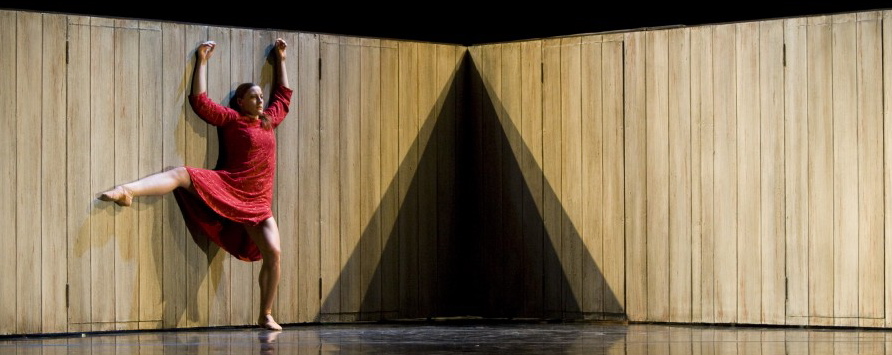On Tuesday evening Mr. Scatter stood before a friendly audience (including Scatter friends Jenny Wren and David Brown) in the lower-level lounge of the Arlene Schnitzer Concert Hall and talked for 20 minutes about Hubbard Street Dance Chicago, the admirable company that was about to perform upstairs. Mr. Scatter discovered that (a) microphones are our friends, and (b) speeches are better with simple sentence structures and a lack of ten-dollar words. Mr. Scatter thanks White Bird for the invitation. If there’s a next time, he promises to do better on the simplicity bit. Here is the manuscript of his talk, in black and white:

Some of you know I do a lot of my writing these days for a Web site called artscatter.com, so bear with me while I scatter a bit.
At Art Scatter we practice something I like to call the Scatter Method of Indirect Analysis, which basically tries to bring some order to the chaotic collision of free association, intuition and logic that keeps batting around inside most of our brains.
The process goes something like this.
You find a topic, and you stick it in the back of your mind, and you sort of forget about it, like it’s a slow-cooking soup.
Except not really, because from that point on, everything you see and hear becomes part of your back-burner thinking process on that particular topic. And eventually it hits the front burner.
You’ve opened your receptors. Even when you don’t actively realize it you’re looking for connections, for clues, for ways to relate your everyday world to this thing you’ve decided to concentrate on. It’s all extremely conjectural. But sometimes intriguing clues drop in from very surprising places.
I happen to think that’s a good way to approach experiencing any sort of art, from reading a book to watching a dance. You, as the audience or consumer, are the finishing point of the art. Without you, it’s incomplete.
And because each of us brings something different to the party, any work of art has a million possibilities for completion. Or I guess that’s 7 billion and counting. The artist creates, but the implications and the impact are really up to us. We want to make it the best experience we can, so we keep our tentacles attuned. See what we pick up.
So. The subject is Hubbard Street Dance Chicago.
Let’s dive in.
One of the first things that struck me when I started investigating the company’s history was that in the mid 1970s, when it began, it grew out of a studio devoted to teaching tap dance. As in Bojangles Robinson and Brenda Bufalino and Gregory Hines.
Tap has a lot of international relatives, from the hornpipe to flamenco to Irish clogging, but it’s an American art form, with roots in slavery and the West African rhythms that became transformed on our own soil. And here’s something Count Basie had to say: “If you play a tune and the person don’t tap their feet, don’t play the tune.”
Bing. That stuck on the Velcro at the end of my tentacles. Didn’t know why, quite, but there it was. Something American. Something that pays attention to the audience.
